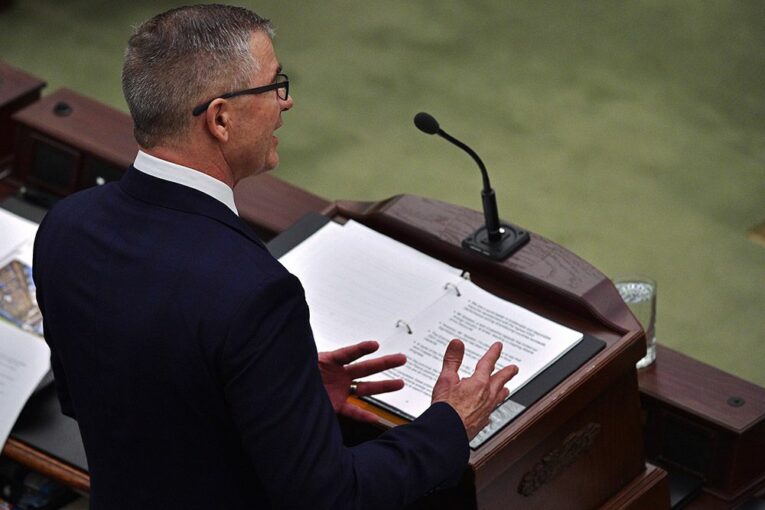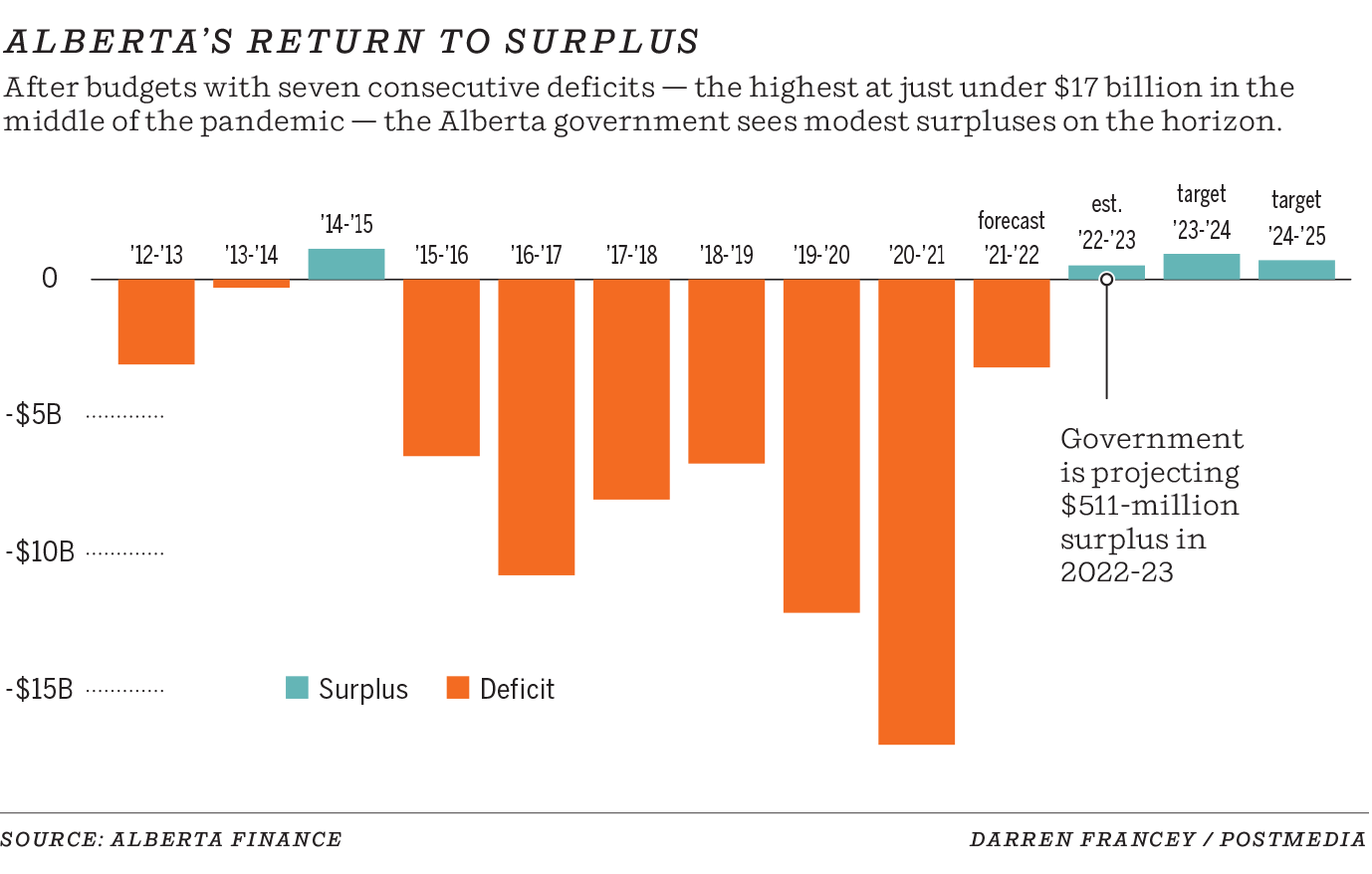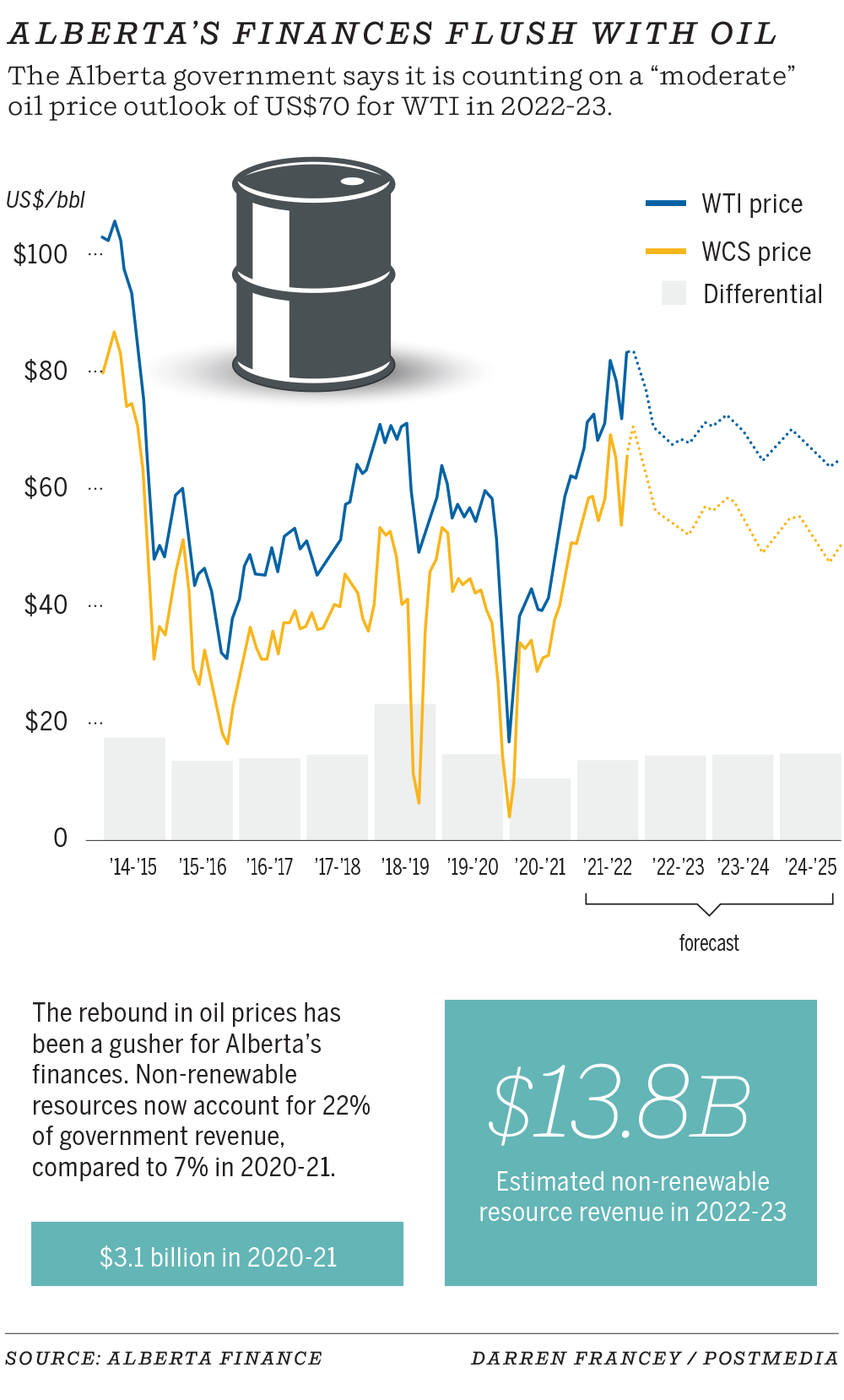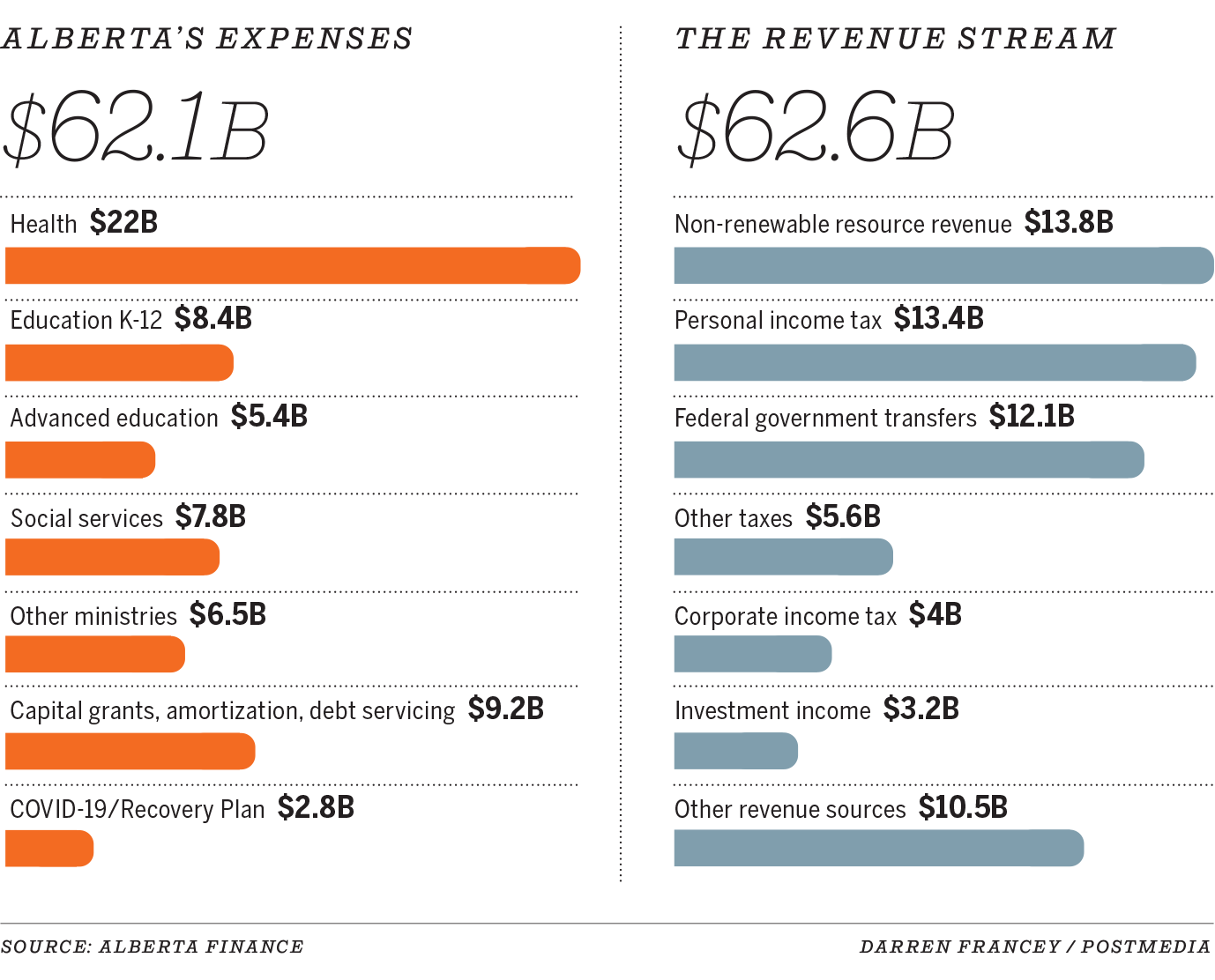
Ding, dong, the deficit is dead.
OK, Albertans didn’t hear those exact words from Finance Minister Travis Toews in Thursday’s budget address. But he did roll out a balanced budget in Alberta, only the second time it’s happened since 2008.
And he expects two more to follow.
The surplus for the incoming budget year, which begins in April, is relatively puny at $511 million on a $62-billion spending plan.
But it’s a stunning reversal from the $17 billion of red ink that swamped the province during the first year of the COVID-19 pandemic, or the smaller $3.2-billion deficit projected for the financial year ending in March.
A $932-million surplus is forecast in 2023-24, followed by $701 million the next year.
“Our fiscal future as a province is vastly improved,” Toews told reporters Thursday.
“Oil prices in this province rise and they fall. We’ve seen that before and it will happen again. That’s why we’re focused on managing what we can manage.”
But is it sustainable, given the volatile nature of energy markets?
“At today’s oil prices, it gives the government some flexibility,” said Travis Shaw, senior vice-president of DBRS Morningstar credit rating agency.
“Does that mean we’re looking at balanced budgets in perpetuity? I don’t think so just yet. There is still a reliance . . . on non-renewable resource revenue, and with that comes volatility and risk.”

This budget is quite cautious on its oil price assumption — or lowballs it, depending on your point of view.
Following Russia’s invasion of Ukraine, West Texas Intermediate crude prices briefly punched through US$100 a barrel on Thursday for the first time since 2014, before closing at $92.81.
The new budget is based on WTI crude prices averaging US$70 a barrel this year.
“It is a conservative forecast because of the nature of a government budget,” said Energy Minister Sonya Savage.
“There’s always a downside, that there can be unexpected events that decrease the price of oil.”
-

Budget 2022 Digest: After years of uncertainty, Alberta plans for a surplus
-

Alberta Budget 2022 puts emphasis on filling skilled labour void
-

Budget 2022: Natural gas rebate plan coming next winter, little immediate relief against inflation
-

Budget 2022: Emissions reduction sees funding boost while other environmental programs get cut
-

Budget 2022: Gondek ‘less than impressed’ with provincial budget
-

Budget 2022: Ambitious plans for education, despite small budget increase
-

Budget 2022: Health care gets $515-million boost, focuses on capacity issues, expanding continuing care
-

Budget 2022: Province to provide $60 million more over three years on recovery services for people with addictions
Albertans have seen the ugly reality that a sudden drop in oil markets can deliver, such as during the spring of 2020 when the pandemic struck and benchmark U.S. crude prices plunged into negative territory.
There’s no denying the ride back up can be just as jarring.
If oil actually averaged $85 a barrel, it would pump an additional $5.8 billion into the government’s coffers, pushing the expected surplus much, much higher.
“It is great news from the point of view of a province that looked just a year or two ago like it was set to join the ranks of higher indebted provinces,” said Douglas Offerman, an analyst with Fitch Ratings agency.
“Oil is, once again, front and centre in Alberta’s fiscal framework.”

University of Calgary economist Trevor Tombe said he was struck by just how conservative the oil price forecast was by the province.
Every $1 per barrel increase in benchmark crude prices over the course of the year generates an additional $500 million in royalties and tax revenues.
“This surplus has a strong possibility of being a lot higher,” Tombe said.
The budget also includes signs of an economic liftoff that’s projected to take place. The Alberta economy is expected to expand by 5.4 per cent in 2022.
The unemployment rate is forecast to fall to an average of 6.6 per cent this year, down from 8.7 per cent in 2021 as more jobs are created.
“Overall, there is a mood of optimism right now that businesses are getting back to work and people are getting back to work,” said Ken Kobly, head of the Alberta Chambers of Commerce.
Job shortages remain a major issue for employers, even as 47,000 Albertans have been looking for work for more than half a year.
For the province, higher tax revenues are anticipated as more people find work and corporate profits take off.
Total government revenues, which tumbled to just $43 billion in 2020-21, are expected to increase to $62.6 billion in the new budget year.
Toews touted the fact other parts of the economy are improving, from the tech sector to new capital investments in manufacturing and petrochemicals.
The government points out regular operating expenses have only increased by 3.6 per cent since the 2018-19 budget, excluding temporary spending.

While moves to contain the growth in spending have played a part in the turnaround, you simply can’t overlook the royalty reality.
Bitumen revenues, which sat at a paltry $2 billion in 2020-21, are expected to top $10.3 billion this year. Production is also rising.
With escalating prices, more oilsands projects are moving into a higher royalty rate, which means more cash for the province.
One large project will graduate into the higher rate this year and the next, and four smaller developments will follow suit in 2024.
Industry investment is also rising. Total oil and gas capital spending, which sat at $23 billion last year, will grow to almost $30 billion in 2022.
Another question facing the province is what to do with an expected surplus.
Toews said the province plans to keep annual earnings from the Heritage Savings Trust Fund within the rainy-day program. Any surplus above that amount would be allocated between the Heritage Fund and paying down Alberta’s debt.
There’s plenty to pay off.
Taxpayer-supported debt levels, expected to come in at $95 billion for the year ending March 31, will rise slightly to about $96 billion next year.
But for the first time since 2014, the province’s budget is forecast to get back to balance, opening up options Alberta didn’t have before — and shining a light on what is largely fuelling the revival to its revenues.
“The deficit monster is far from dead, but it has been papered over, so it makes it harder to see,” said Tombe, noting about one-fifth of all revenues are forecast to come from non-renewable resources.
“If oil prices take a turn south, they could do it pretty rapidly and we will find ourselves back in the red pretty quickly.”
Chris Varcoe is a Calgary Herald columnist.
You can read more of the news on source
